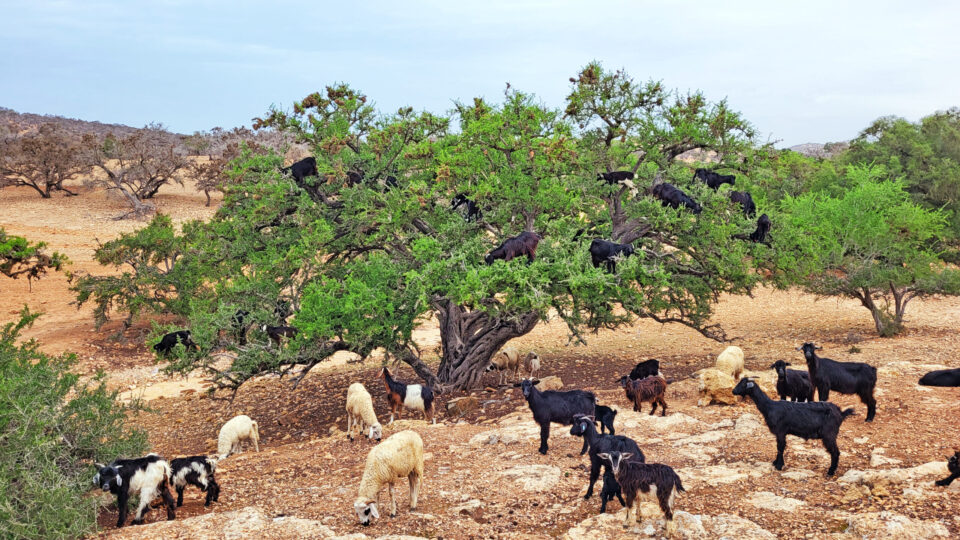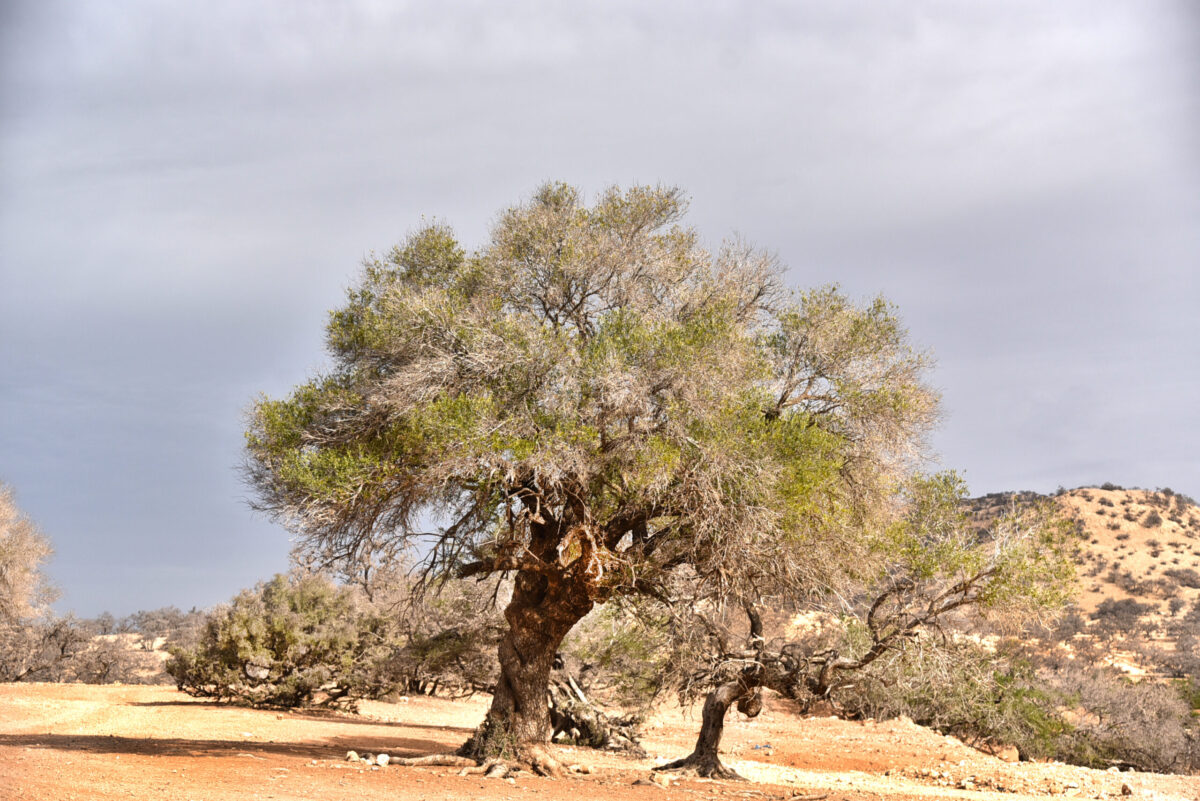
Argan holds a special place as a symbol of Morocco, embodying the country’s rich cultural heritage, economic vitality, and environmental resilience. The traditional extraction of Argan oil, often done by Berber women, is deeply ingrained in the cultural practices of the region. The oil is used daily, from culinary traditions to cosmetic and medicinal applications. Bot Argan tree and its oil have significant economic value for Morocco. The international demand for Argan oil has led to the growth of a thriving industry, providing income and employment opportunities for local communities. Cooperative initiatives, especially led by women, have empowered them economically and socially through producing and selling Argan oil products.
Argan trees are well-adapted to the arid conditions of Morocco, playing a crucial role in sustainable agriculture. It can survive in semi-desert environments characterized by low rainfall and high temperatures. Its distinctive appearance with gnarled trunks and small, evergreen leaves helps it conserve water. The tree’s roots reach deep into the soil, helping it access water sources not readily available to other plants. The extensive root system of Argan trees helps prevent soil erosion and contributes to soil conservation. The trees also support biodiversity, creating a unique and resilient ecosystem in a challenging environment.
The ability of Argan trees to thrive in arid conditions symbolizes resilience and adaptability
The ability of Argan trees to thrive in arid conditions symbolizes resilience and adaptability. Morocco, facing climate change and sustainable land use challenges, finds inspiration in the Argan tree’s ability to endure and provide valuable resources for its people. Essentially, the Argan tree and its oil are more than just a natural resource in Morocco. They represent a connection between the land and its people, a bridge between tradition and modernity, and a source of pride for Moroccans who celebrate the unique and multifaceted significance of the Argan tree in their cultural tapestry.
The Argan Oil
The valuable oil extracted from its seeds sets the Argan tree apart. Argan oil has been used for centuries by the local Berber communities for culinary, cosmetic, and medicinal purposes. The oil is rich in nutrients, antioxidants, and essential fatty acids, making it highly sought after in the beauty and health industry.
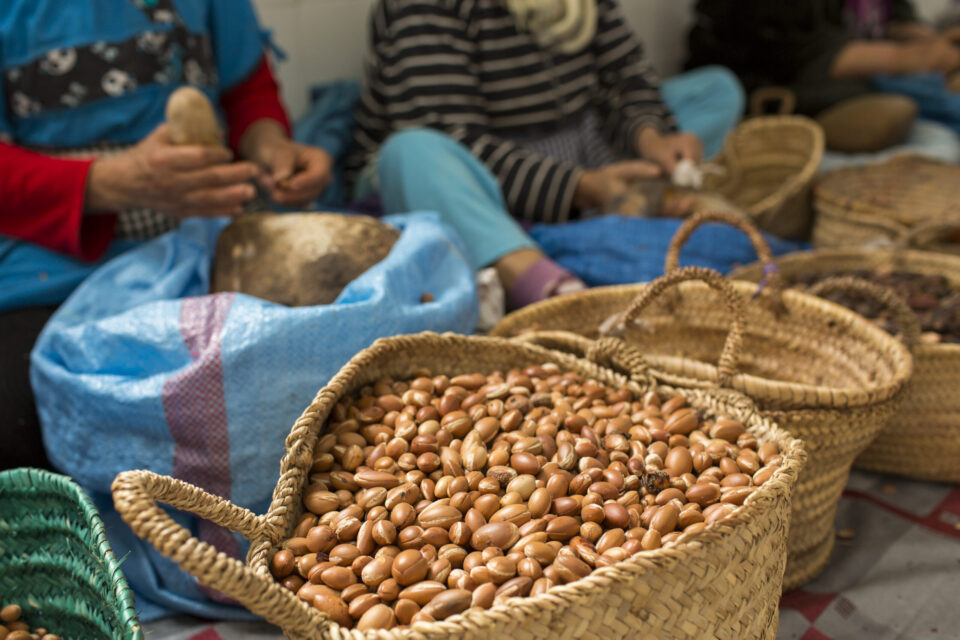
The traditional process of extracting Argan oil involves harvesting the tree’s fruit, which resembles a small olive, and manually cracking open the hard shell to access the seeds. These seeds are then ground and pressed to obtain the precious Argan oil. The labor-intensive process has been traditionally carried out by Berber women, contributing to the socio-economic well-being of the region.
Goats and the trees
One of the unique and charming aspects of the Argan tree ecosystem in Morocco involves a peculiar partnership between goats and the trees. In certain regions where Argan trees grow, particularly in southwestern Morocco, goats have developed an interesting and acrobatic way of harvesting the fruit.
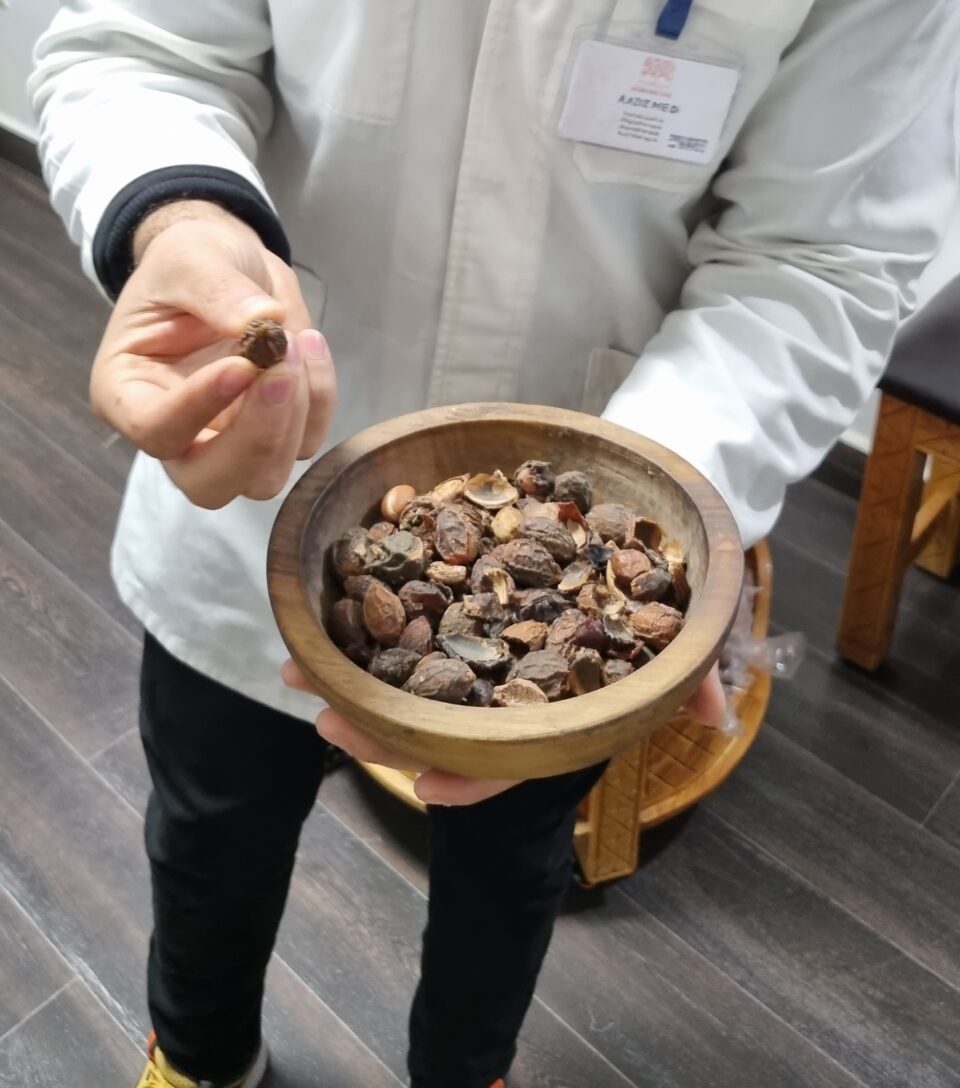
Argan trees produce small, olive-like fruits that contain seeds from which valuable Argan oil is extracted. During the fruiting season, local goats, known as “Argan tree goats” or more colloquially as “tree-climbing goats,” have been observed climbing these trees to feed on the fruit. The goats are remarkably agile and can climb the thorny branches of the Argan trees, often reaching high into the canopy to consume the Argan fruits. This behavior is not only an adaptation to the scarcity of food in the arid regions but also serves as a method of dispersing the Argan seeds. After digesting the fleshy part of the fruit, the goats excrete the seeds, contributing to the natural propagation of Argan trees across the landscape.
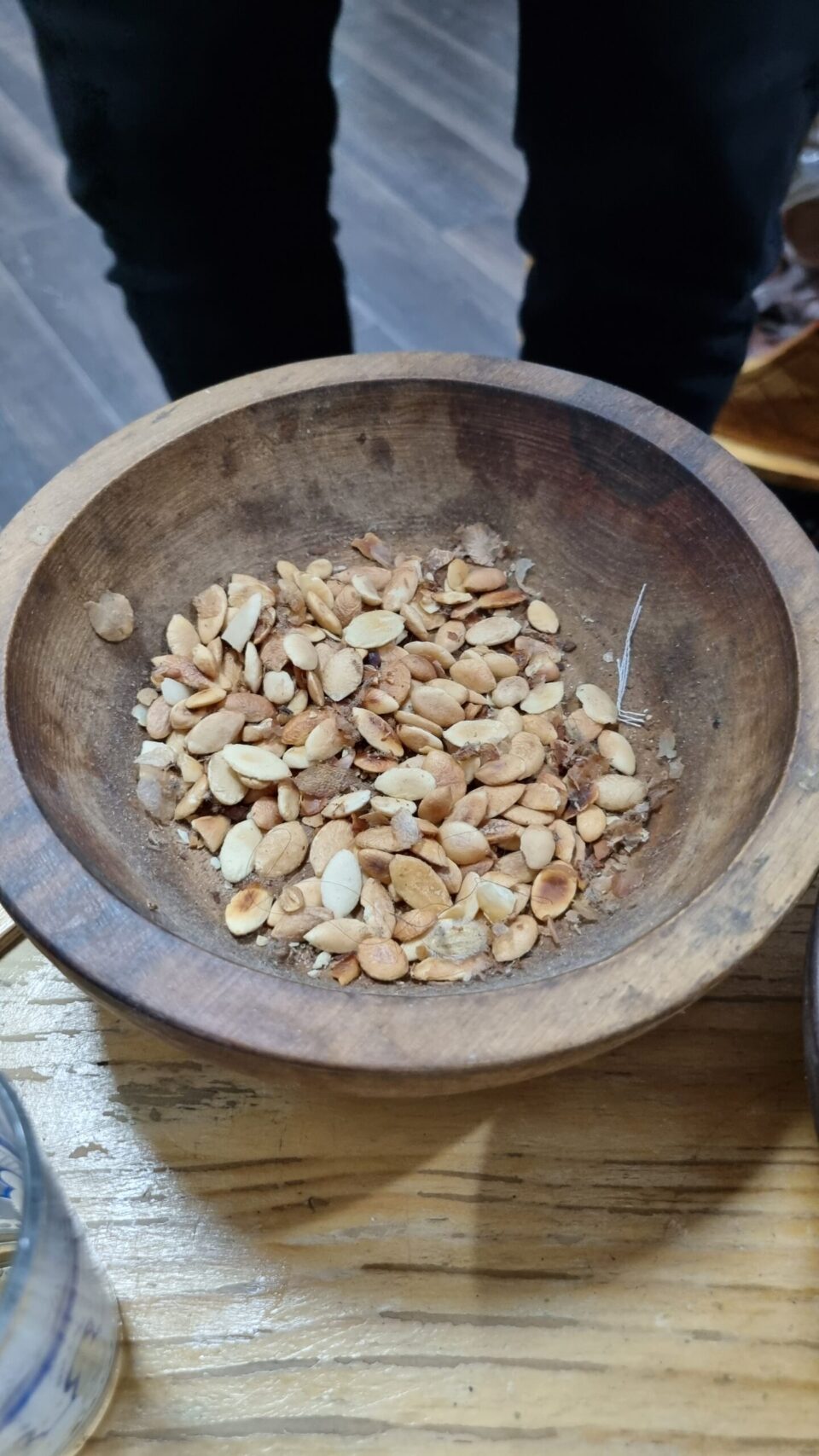
This symbiotic relationship between Argan trees and goats is not only an ecological phenomenon but also a cultural one. It has become an iconic image of the Moroccan landscape and is often depicted in photographs and artwork. Tourists are sometimes fascinated by the sight of goats perched in the branches of Argan trees, creating a unique and memorable scene.
The Argan oil is a culinary symbol of the country’s diverse and flavorful gastronomy
While this behavior is interesting and has cultural significance, it’s noteworthy that it’s not widespread across all Argan tree populations. Additionally, the increased human impact and tourism have raised concerns about the well-being of the Argan trees and the goats. Conservation efforts are underway to balance the coexistence of goats and Argan trees while ensuring the sustainability of this iconic Moroccan ecosystem.
The Argan tree and its oil have significant economic value for Morocco. The international demand for Argan oil has led to the growth of a thriving industry, providing income and employment opportunities for local communities. Cooperative initiatives, especially led by women, have empowered them economically and socially through producing and selling Argan oil products. It has gained international popularity recently for its use in skincare, haircare, and culinary applications. The increasing demand has led to conservation efforts to protect the Argan tree and ensure sustainable harvesting practices. Organizations and cooperatives in Morocco are working to preserve the ancient Argan forests and empower local communities through fair trade practices.
